How to Find the Best Personal Mini Storage Near Me
Let’s be honest: the hardest part of using a storage unit is the physical labor. Renting a truck, loading it perfectly, driving it across town, and then unloading everything—it’s exhausting. If you’re looking for a ‘personal mini storage near me’, you should know that you don’t have to settle for that hassle. The best storage solutions are the ones that do the heavy lifting for you. By having a container delivered right to your door, you can pack at your own pace and skip the truck rental entirely. This guide is all about finding a smarter, more efficient way to store your belongings.
- Save 50% on move-in
- No truck rental
- Ground level

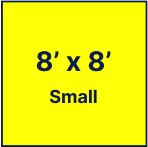
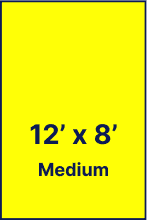

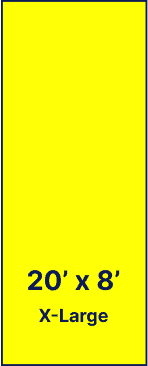





- Save 50% on move-in
- No truck rental
- Ground level
Box-n-Go Portable Storage Unit Sizes
Key Takeaways
- Strategize Your Space: Save yourself future headaches by using a space calculator to pick the right unit size from the start, and always organize your items with a clear walkway so you can reach everything easily.
- Prioritize True Convenience: The closest facility isn’t always the best choice. Consider modern solutions like portable containers that are delivered to you, which eliminates the need to rent a truck and move your belongings twice.
- Look Beyond the Monthly Rate: A great deal includes more than just a low price. Factor in security features, fair contract terms, and overall facility cleanliness to find a solution that offers real value and peace of mind.
Is a Storage Unit Right for You?
Deciding if you need a storage unit can feel like a big step. Maybe you’re downsizing, preparing for a move, or just trying to reclaim your garage from holiday decorations and old furniture. Whatever the reason, the idea of storage often comes with a lot of questions and a few outdated assumptions. The truth is, modern storage solutions are more flexible, secure, and convenient than ever before, designed to make your life easier, not more complicated. It’s less about just stashing your stuff and more about creating space and flexibility in your life. Let’s clear up some common misconceptions and look at what today’s storage options can really offer.

Busting Common Storage Myths
One of the biggest myths is that self-storage is only for people with way too much stuff or that it’s an unaffordable luxury. That’s just not the case anymore. Think of a storage unit as a practical tool. It’s perfect for temporarily storing items during a home renovation, keeping business inventory organized, or rotating seasonal gear like skis and kayaks. Many people find that affordable options are available that fit their budget. Another common worry is security, with some people picturing a flimsy lock on a garage in the middle of nowhere. As we’ll see, that image is far from reality.

Why Modern Storage is a Game-Changer
The storage industry has changed a lot. It’s no longer just about rows of identical metal doors. Companies are focused on making the entire experience better for you. This innovation in the self-storage market means you have more choices than ever. For example, portable storage containers can be delivered right to your door. You can pack at your own pace, and then have the container picked up and moved to a secure facility or your new home. This completely removes the need to rent, load, and unload a moving truck, saving you a ton of time and hassle. It’s this focus on convenience that makes modern storage a true game-changer.
How Top-Notch Security Gives You Peace of Mind
Handing over your belongings requires trust, and reputable storage facilities take that responsibility seriously. Gone are the days of worrying about your items being left vulnerable. Today’s facilities prioritize security with features like 24/7 video surveillance, electronic gate access, and well-lit premises. Many also offer climate-controlled units to protect sensitive items like wooden furniture, electronics, and important documents from extreme temperatures. When you choose a facility, you’re not just renting space; you’re paying for the peace of mind that comes with knowing your things are protected around the clock.
Store on your driveway or inside our secure facility. Load/unload only once. Ground level access.
How to Pick the Perfect Unit Size
Choosing the right storage unit size can feel a bit like a guessing game. Pick one that’s too small, and you’re stuck playing a stressful game of Tetris with your belongings. Go too big, and you’re paying for space you don’t even need. Since our portable containers are delivered right to your door, getting the size right from the start makes your moving or storage project that much smoother. No one wants to realize they need a second container halfway through loading, which is why a little planning goes a long way.
The good news is, it’s easier than you think to find your perfect match. Most storage needs fall into three main categories: small, medium, and large. Think of it like ordering a coffee—once you know the basics, you can pick the one that fits your situation perfectly. We’ll walk through what each size typically holds, so you can visualize your own items inside. Whether you’re decluttering the garage, staging your home for sale, or moving across town, there’s a size designed for your project. By the end of this section, you’ll have a clear idea of which unit will work best for you, taking all the guesswork out of the equation and letting you focus on the task at hand.
Small Units: For the Essentials
Think of our small units as a spacious walk-in closet. They’re perfect for those times when you just need a little extra room. Are you clearing out a dorm room for the summer, storing seasonal decorations, or making space for a new baby? This is your go-to size. A small unit can typically hold a mattress set, a small dresser, and several boxes. It’s also ideal for stashing away sporting equipment like skis or golf clubs that you don’t need year-round. If you’re tackling a single-room decluttering project or have the contents of a studio apartment to store, the small unit offers just enough space to get the job done without feeling overwhelming.
- Call or order online in minutes
- We deliver storage to you
- Pack at home, at your convinience
- Store on your property or at indoor facility
- Move locally or nationwide
- Call or order online in minutes
- We deliver 16′ and 20′ storage to you
- Pack at home, loading labor available
- Store on your property
- Secured Extra Space
Medium Units: The Goldilocks Option
Our medium units are the “just right” option for many people, making them a popular choice. If you’re moving out of a one- or two-bedroom apartment, this size is likely your sweet spot. It can comfortably fit the contents of a couple of rooms, including larger furniture like a sofa, coffee table, and dining set, plus plenty of boxes. Medium units are also fantastic for home renovation projects when you need to clear out a kitchen or living room for a few weeks. It gives you enough breathing room to store your essentials without having to cram everything into a spare bedroom. This is the versatile workhorse of storage.
Large Units: When You Need Max Space
When you’re planning a bigger move, our large units are ready to handle the heavy lifting. These are designed to hold the contents of a multi-bedroom house, including all the bulky items. Think refrigerators, washers and dryers, bedroom sets, and sectional sofas—all with room to spare for your boxes. If you’re combining households or need to store everything while you wait to close on a new home, this is the size that offers true peace of mind. To make the most of the space, it’s important to have a solid packing strategy. A little organization goes a long way in fitting everything securely.
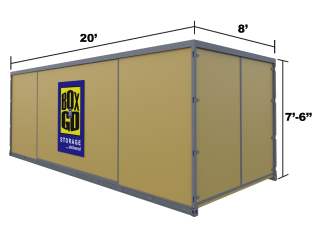
20’ Container – all weather.
Perfect for 3-bedroom residence.
5-7 rooms, furniture, appliances, etc.
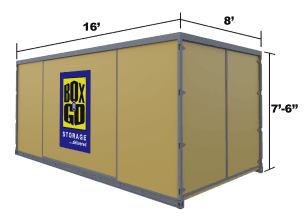
16’ Container – all weather.
Perfect for 2-bedroom residence.
3-5 rooms, furniture, appliances, etc.
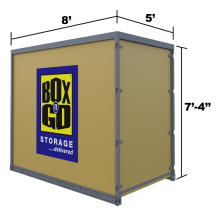
8’ Container – all weather.
Modular – works for any need.
Each fits 1-1.5 rooms.
Use a Space Calculator to Be Sure
While these general guidelines are a great starting point, the best way to be certain is to use a tool designed for the job. An online storage calculator removes all the guesswork. You can simply list out the furniture and items you plan to store—from your king-size bed to your collection of floor lamps—and the calculator will recommend the perfect unit size for your specific needs. It’s a quick and easy step that provides total confidence in your decision. Taking two minutes to use a calculator can save you the headache of ordering the wrong size and ensures your moving day goes off without a hitch.
What Features Actually Matter in a Storage Unit?
Once you know what size you need, it’s time to get into the details. Not all storage facilities are created equal, and the right features can make a world of difference in protecting your belongings and simplifying your life. It’s about more than just a locked door; it’s about finding a solution that gives you confidence and convenience. From security systems to how you access your things, here are the key features to look for.
Look for Solid Security and Monitoring
Your peace of mind is priceless, so don’t settle for a flimsy lock and a prayer. A great storage facility takes security seriously. Look for features like 24/7 video surveillance, electronic gated access, and good lighting throughout the property. Some facilities even have on-site managers. When you store your items, you’re trusting a company to keep them safe. Strong security measures are a clear sign that they take that responsibility seriously. If you’re using a portable container service, ask about the security at their central warehouse—often, these are even more secure since public access is limited.
We deliver the best storage solutions. No gimmicks:
- No truck to rent. We deliver storage to you!
- Load/Unload only once.
- Pay only for space you use.
- Secure, climate-friendly facility.
- Drive-up access
No Truck to rent…EVER!
- Save money and time.
- Reduce the risk of accidents and injuries.
- No need to pay for gas, insurance & mileage!
Load ONCE Storage Solution!
- You only need to load your belongings once!
- No need to load and unload it all again into a storage unit.
- All containers come with easy ground level access!
Pay Only for the Space You Use!
(if storing at our facility)
- No not need to guess on how much space you actually need.
- Order an extra 8’ x 5’ unit. Do not use it – do not pay for it.
Secure, Climate-Friendly Facility!
- Highest degree of security and protection.
- Our 8’ x 5’ units are breatheable – no mold or mildew.
- No funky smell when your belongings return.
EASY Drive-Up Access!
(if storing at our facility)
- Access your units at ground level.
- No elevators, ramps, stairs to climb.
- Schedule access appointment & drive straight to your units.
Does Your Stuff Need Climate Control?
Think about what you’re storing. If it’s wooden furniture, electronics, important documents, or artwork, you might want to consider a climate-controlled unit. These units maintain a consistent temperature and humidity level, protecting your sensitive items from extreme heat, cold, and moisture that can cause warping, mildew, or rust. While not everything needs this level of protection, it’s a must-have for valuables and heirlooms. If you’re storing less sensitive items, a unit with good ventilation can often do the trick to prevent mustiness, so be sure to ask about airflow and container construction.
Check the Access Hours and Rules
Imagine needing to grab something important from your unit, only to find out the facility closed ten minutes ago. Before you sign a contract, always confirm the access hours. While many places offer extended or even 24-hour access, it’s never a given. Also, ask about the process. Do you need a specific code? Is access at ground level, or will you be hauling things up an elevator and down long hallways? A service that brings a container to you and offers easy, ground-level access at their facility can save you a ton of hassle and physical strain.
A Well-Maintained Facility is a Must
The overall condition of a storage facility says a lot about the company. When you visit, take a look around. Is the property clean and well-lit? Are the units in good repair, or do you see rust and damage? A clean, tidy facility shows that the management cares about its customers and their belongings. It also suggests they’re proactive about pest control and general upkeep, which helps keep your items safe from unwanted critters and environmental damage. If you can’t visit in person, check out online photos and reviews for clues about the facility’s commitment to cleanliness.
Don’t Forget About Extra Perks
Sometimes, it’s the little things that make the biggest difference. Does the facility offer online bill pay for convenience? Are there any move-in specials or discounts available? Some companies even provide dollies and carts for free use on-site, which can be a lifesaver on moving day. Another great perk is flexibility. A service that delivers a storage unit directly to your door eliminates the need to rent a truck, saving you time, money, and a major headache. These added benefits can turn a stressful moving experience into a smooth and simple process.
How to Compare Storage Facilities Like a Pro
Once you’ve decided you need a storage unit, the next step is finding the right one. It’s tempting to just pick the closest or cheapest option, but a little research now can save you a world of hassle later. Think of it like choosing a temporary home for your belongings—you want it to be secure, accessible, and a good value. Comparing facilities isn’t just about looking at a price tag; it’s about understanding what you’re truly getting for your money.
You’ll want to weigh a few key factors: location, price, customer reputation, and the specific features they offer. A facility might look great on paper, but what if their access hours don’t fit your schedule? Or what if their great introductory rate doubles after three months? Digging into the details helps you find a storage solution that genuinely fits your life, not one that forces you to work around its limitations. We’ll walk through exactly what to look for so you can make a choice with total confidence.
Consider Location and Accessibility
When you start your search, “location” is probably the first thing that comes to mind. And yes, finding a facility that’s conveniently located is important. You can easily search for storage units in your area to get a lay of the land. But think beyond just the address. How easy is it to actually get your things into the unit? A traditional facility might be just down the street, but you still have to rent a truck, load it up, drive over, and then unload everything into your unit. True convenience is about minimizing the work. Consider options that bring the storage to you, saving you from playing Tetris in a truck bed multiple times.
Compare Prices (The Smart Way)
Getting a good deal is always a priority, but the advertised monthly rate is only part of the story. To truly compare prices, you need to look at the total cost. Does the facility require you to buy a specific type of lock? Will you need to rent a moving truck? Don’t forget to factor in the cost of your own time and energy. Sometimes, paying a little more for a service that saves you an entire weekend of heavy lifting is the smartest financial move you can make. Many common self-storage myths revolve around cost, so be sure to ask about administrative fees, potential rent increases, and insurance requirements before you commit.
Read Reviews from Real Customers
Online reviews are your best friend when vetting storage facilities. They provide an unfiltered look at what it’s like to be a customer. Look for patterns in the feedback. Are people consistently mentioning the clean and secure units? Do they praise the helpful staff? On the flip side, recurring complaints about poor security, hidden fees, or pest problems are major red flags. You’re handing over your possessions, and it’s important to trust the company you choose. A facility with a long history of happy, long-term customers is always a good sign that they’re doing things right.

Key Questions to Ask Before You Sign
Before you sign on the dotted line, make sure you have all the information you need. Don’t be shy about asking questions—a good facility manager will be happy to answer them. Start with the basics: What are the access hours? What security features are in place (cameras, gates, on-site staff)? Then, get into the details of the contract. What’s the policy for late payments? How much notice do you need to give before moving out? You can often check a facility’s website for an FAQ section, but it’s always smart to confirm the specifics for the location you plan to use. Knowing the answers upfront prevents surprises down the road.
Pro Tips for Organizing Your Storage Unit
Once your storage unit is booked, the next step is filling it. A little planning goes a long way toward creating a space that’s organized and easy to use. Instead of just tossing things in, a bit of strategy will save you from future headaches and make it simple to find exactly what you need, when you need it. Think of it as setting up a mini-warehouse where you’re the boss. These tips will help you get everything in order so you can access your belongings without having to dig through a mountain of boxes.
Pack and Load Like a Tetris Master
The best way to approach loading your storage unit is to think of it like a game of Tetris. Before you even start, plan how your items can fit together. Place your heaviest, sturdiest items like appliances and solid furniture at the back and along the bottom. This creates a solid base. From there, build up with lighter boxes and more fragile items. Disassemble furniture like bed frames and tables to save space, and be sure to keep all the screws and small parts together in a labeled bag taped to the main piece. A strategic packing plan will help you maximize every square foot.

Use Every Inch of Vertical Space
Don’t forget to look up! The height of your storage unit is valuable real estate. The key is to use sturdy, uniform-sized boxes that you can stack safely and securely. This prevents towers of mismatched boxes from toppling over. For even better organization, consider bringing in freestanding shelving units. Shelves get your belongings off the floor, protect them from potential moisture, and make it much easier to see and grab what you need without unstacking a dozen boxes. It’s a simple move that makes a huge difference in keeping your unit tidy and accessible.
Create an Inventory (You’ll Thank Yourself Later)
I know, I know—creating an inventory sounds like a tedious chore. But trust me, it’s a step you won’t regret. A simple list of what’s inside each box will save you from frantically tearing everything apart just to find your holiday decorations. Use a spreadsheet or one of the many home inventory apps to keep track of everything. As you pack, label each box on multiple sides with a number and a general description of its contents (e.g., “Box 12: Kitchen – Glassware”). Your future self, calmly finding exactly what you’re looking for in minutes, will be grateful.
Storing for the Long Haul? Read This
If you’re planning to store your items for several months or longer, your approach should be slightly different. Invest in durable plastic bins with airtight lids instead of cardboard boxes, as they offer better protection from dust and pests. It’s also crucial to plan for accessibility. Think about which items you might need to retrieve and place them toward the front of the unit. Creating a clear walkway down the center of your unit is one of the best long-term storage strategies you can use. This way, you can reach items in the back without having to empty the entire unit.

What to Know About Costs and Contracts
Alright, let’s talk money and paperwork. It’s not the most exciting part of renting a storage unit, but understanding the costs and contract details upfront will save you from headaches later. The monthly price you see advertised is just one piece of the puzzle. You also need to think about administrative fees, insurance, and potential rent increases down the line. A good storage facility will be transparent about all its costs, but it’s always smart to know what questions to ask.
Think of the rental agreement as your roadmap. It outlines everything from when your payment is due to what happens if you miss one, and what kind of notice you need to give before moving out. It might seem like a lot of fine print, but taking a few minutes to review it can make your entire storage experience smoother. We’ll walk through the key things to look for in your contract, what you need to know about insurance, how to handle payments, and the best ways to find a great deal. This way, you can sign on the dotted line with total confidence.
Decode Your Rental Terms
One of the biggest myths about storage units is that you’ll be locked into a long, complicated lease. The reality is much more flexible. Most facilities offer month-to-month contracts, which is great news for you. This means you aren’t committed for a year and can end your rental whenever your needs change. Just be sure to check the fine print for the move-out notice period—it’s usually around 10 to 30 days. Also, take a look at the rules for what you can and can’t store and the policy on late fees so there are no surprises.
Do You Need Storage Insurance?
This is a big one. While a facility’s insurance covers their building, it almost never covers your belongings inside the unit. That part is on you. Before you rent, check your current homeowner’s or renter’s insurance policy, as it might already cover items kept off-site. If it doesn’t, don’t worry. You can easily buy tenant insurance for your stored items, and most facilities offer affordable plans. It’s a small monthly cost that provides a huge amount of peace of mind, protecting you against unexpected events like theft or damage.
Know Your Payment Options
Paying for your storage unit should be simple. Most modern facilities offer a variety of ways to pay to fit your lifestyle. You can typically pay online through a customer portal, which is perfect for managing your account from anywhere. To make things even easier, ask about setting up automatic payments. This is the best way to ensure you never miss a due date and avoid any potential late fees. Of course, you can usually still pay in person or over the phone if you prefer. The key is to find a facility that makes this monthly task feel effortless.

Ask About Discounts and Deals
Don’t be shy about asking for a deal—you can often find ways to lower your monthly bill. Many facilities offer move-in specials, like the first month free or a reduced rate for the first few months. It’s also common to find discounts for students, military personnel, or for pre-paying for several months at once. Some places even have referral bonuses if you get a friend to rent a unit. When you call for a quote, make it a point to ask the manager directly: “Are there any promotions or discounts I should know about?” You might be pleasantly surprised by the savings.
How to Make Your Storage Experience a Breeze
Using a storage unit shouldn’t feel like a chore. With a bit of planning, you can turn what seems like a huge task into a smooth, manageable process. It’s all about working smarter, not harder. From the moment you book your unit to the day you retrieve your last box, a few simple strategies can make all the difference. Think of it as setting your future self up for success. A well-organized unit not only protects your belongings but also saves you time and stress down the road. When you approach storage with a clear plan, you take control of the chaos that often comes with moving or decluttering. Instead of just throwing things into a box, you’re creating a system that works for you. This guide will walk you through how to make your entire storage experience simple and hassle-free.
Get Ready for Moving Day
The key to a stress-free moving day is preparation. The good news is that modern storage solutions have made this step easier than ever. You can often find and rent a storage unit online and get started right away, which is perfect for last-minute needs. To make things even simpler, consider a service that brings a portable container directly to you. This eliminates the need to rent and drive a big truck, allowing you to load your belongings at your own pace, right at your doorstep. Before you start packing, take a quick inventory of what you plan to store so you can choose the right unit size and gather your supplies like boxes, tape, and markers.
Keep Your Unit in Great Shape
A clean, well-maintained facility is a great start, but keeping your individual unit in good condition is just as important. Reputable companies work hard to ensure their facilities are clean and secure, which creates a positive experience for their customers. You can do your part by taking a few extra steps. Use plastic, airtight bins instead of cardboard boxes to protect against moisture and pests. It’s also a good idea to place items on pallets or shelving to keep them off the concrete floor. This improves airflow and adds an extra layer of protection, ensuring your belongings stay in the same condition as when you stored them.
Organize for Quick and Easy Access
Nothing is more frustrating than needing one specific item from a storage unit and realizing it’s buried under a mountain of boxes. That’s why a solid organization plan is your best friend. Before you even start, plan before you pack by grouping similar items together. Use sturdy, uniform boxes and label them clearly on multiple sides with a list of contents. As you load the unit, place bulkier items and things you won’t need frequent access to at the back. Most importantly, create a clear walkway down the center of the unit. This simple step allows you to reach everything without having to unpack the entire space.

Simple Rules for Staying Safe
Your peace of mind is paramount, and that starts with security. Top storage facilities prioritize safety with features like gated access and 24/7 video recording. While the facility handles the big picture, you can take simple steps to ensure your own safety. When visiting your unit, especially after hours, be aware of your surroundings and let someone know where you are. Never prop open security gates or doors for others. When packing your unit, stack boxes carefully, placing heavier ones on the bottom to prevent them from toppling over. Following these common-sense rules helps protect both you and your belongings.
Related Articles
- Self-Storage Sizes Guide: Find Your Perfect Fit
- Personal Self‑Storage Guide: Choose Right & Store Smart
- Your Guide to Personal Self Storage: Find the Right Unit – Box n Go Storage and Moving
- Business Facilities Nearby You: Access Secure Options
- Best Self Storage Fullerton: Top Facilities Compared – Box n Go Storage and Moving
Frequently Asked Questions
What’s the real difference between a portable container and a regular storage unit? The biggest difference comes down to convenience and labor. With a traditional storage unit, you’re responsible for renting a truck, loading all your belongings, driving to the facility, and then unloading everything again into the unit. A portable container is delivered directly to your home. You can load it on your own schedule, and once you’re done, the company picks it up. This completely cuts out the truck rental and the exhausting process of loading and unloading your items twice.
How do I access my things once the container is at your warehouse? It’s a lot simpler than you might think. While our warehouse isn’t open for public walk-ins to maintain security, you can absolutely access your container. You just need to give us a call to schedule a time. We’ll then place your personal container in a secure, ground-level access area so you can easily retrieve what you need without having to deal with elevators or long hallways.
Is storage insurance really necessary if the facility is secure? Yes, it’s a very smart move. Think of it this way: the storage facility’s insurance covers their property, like the building and the grounds. Your personal insurance, or a separate tenant insurance policy, is what covers your actual belongings inside the unit. Even with top-notch security, things like fire or water damage can happen. Insurance provides that extra layer of protection and peace of mind, ensuring you’re covered no matter what.
What’s the most common mistake people make when renting a storage unit? Hands down, the most common mistake is choosing a unit that’s too small to save a few dollars. This almost always leads to frustration when you realize you can’t fit everything, or you have to pack things so tightly that you can’t access anything without emptying the entire unit. It’s much better to have a little extra breathing room. Using an online space calculator before you book can help you get the size right the first time.
How much notice do I need to give before I’m done with my unit? Most rental agreements are flexible and operate on a month-to-month basis, so you aren’t locked into a long-term commitment. However, you can’t just empty the unit and disappear. Facilities typically require a written notice before you move out, usually somewhere between 10 and 30 days. Be sure to check your specific rental agreement so you know the exact policy and can plan accordingly.

